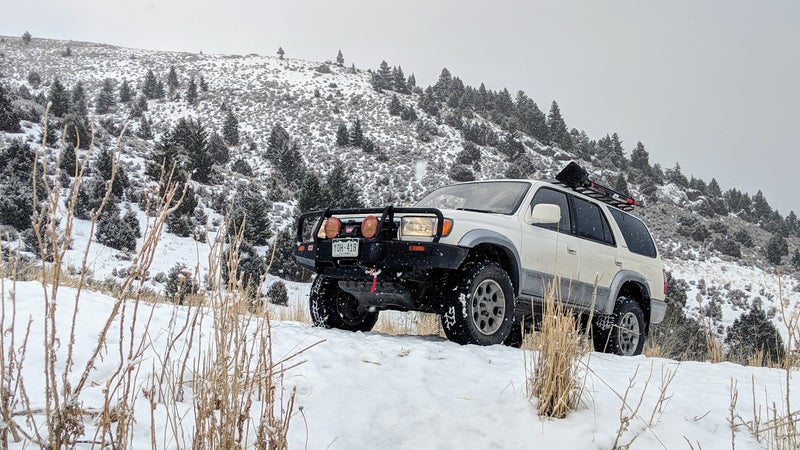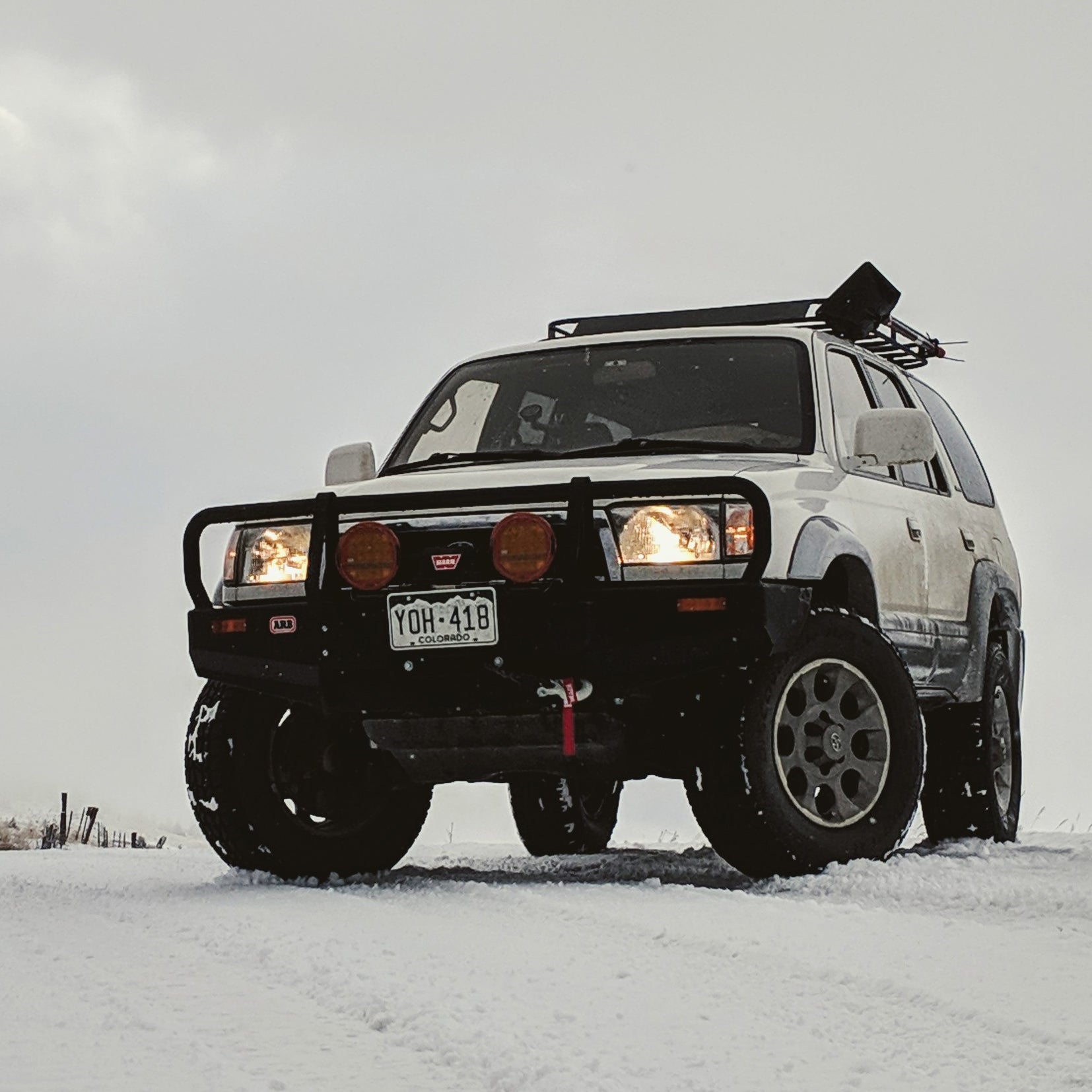Driving in winter conditions isn’t just dangerous; it can also do lots of damage to your vehicle. So I set out to build a truck capable of tackling this season’s unique challenges, on a budget low enough that I don't have to worry about rust, dents, and a filthy interior covered in muddy dogs’ detritus.
Here’s how you can do the same.��
Why Build a Dedicated Winter Vehicle?
Do you need a dedicated vehicle for winter? Of course not. You can just put studless winter tires on whatever you drive already in order to achieve the ability to drive safely in low temperatures and on snow and ice.��And you can always take some of the lessons below and use them to convert whatever you’re driving into a more winter-ready machine. For that, skip the part about the truck and move on to the tires.��
All that said, I think a dedicated vehicle makes my family’s life easier and will ultimately save us time, money, and hassle. By buying a cheap old truck, I’m keeping the road salt off my old Land Rover so it won’t rust. By choosing that truck carefully and modifying it specifically to suit winter conditions, I’m also increasing our safety, minimizing the odds of us getting stuck, and giving us the ability to easily get unstuck should the weather turn particularly bad. We’ll still use our other cars during the winter months, only now we have a dedicated machine for handling the gnarly stuff. If you face similar challenges, or also enjoy winter sports, I think you’ll benefit similarly.��
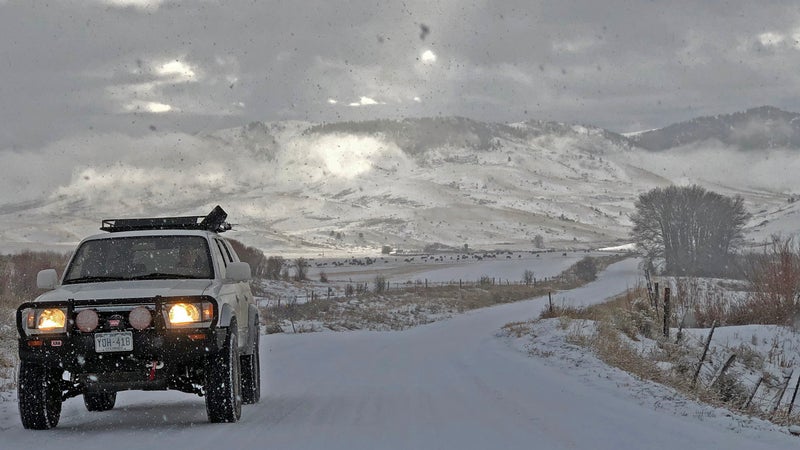
The Truck: $5,000
You want something reliable, useful, and nice enough that you won’t mind driving it. For me that was a 1998 Toyota 4Runner Limited with 228,000 miles on it. These trucks were simple and used common components that can be found in many other vehicles from the same era, which makes parts cheap and maintenance easy. (More on that in a bit.)
I chose a vehicle with four-wheel drive, rather than all-wheel drive. By locking the speed of the front and rear axles together, four-wheel drive doubles your ability to use the traction provided by your tires, making it more capable than all-wheel drive. But you have to switch in and out of 4WD manually. Using 4WD on dry roads can be dangerous, and doing so will damage your transmission. All-wheel drive can’t find quite as much traction but doesn’t require that a driver employ good judgment, so it may be a better choice for many people. Neither system helps while braking or cornering.��
I also drive off-road nearly every day of the week, even in the winter, and want to use this truck to support all of our skiing, hunting, and other outdoor adventures, regardless of the weather. So I opted for a rugged, body-on-frame SUV. Compared to a car-based crossover, this means I end up with less interior space, worse fuel economy, and a taller center of gravity, which can make driving it in slippery conditions tricky. If you’re staying on the road, you may want something that does without those caveats: an old Subaru, basically.��
The 4Runner is also fitted with a few other features that suit our needs. A low-range transfer case helps control speed while climbing or descending steep stuff. This becomes even more important in winter, because things get so slippery. A locking differential on the rear axle adds the ability to find even more traction than 4WD. And the leather interior is just nice enough, even this many miles in, that we don’t mind spending time in it.��
And because third-generation 4Runners are pretty common, I’ll be able to pull all the extras off this one if it ever succumbs to rust or a crash, then just bolt them onto an identical replacement vehicle. Basically, if this car winds up in a ditch this winter, it won’t be a big deal. But I’ve reduced the odds of it ending up in that ditch as much as possible.
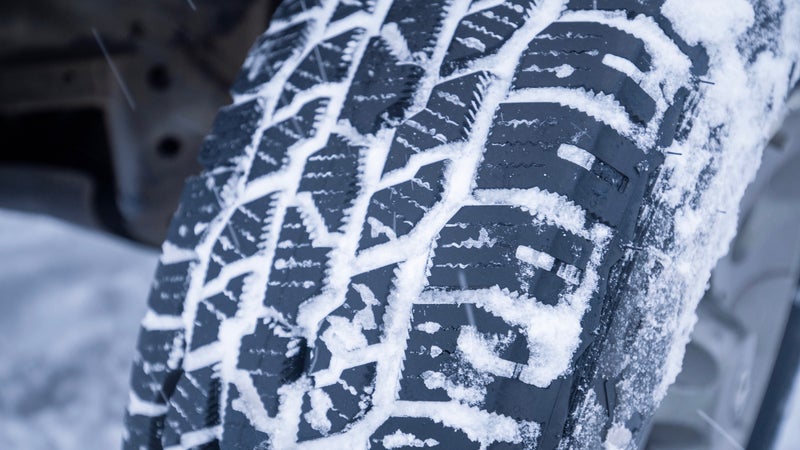
Tires: $750
Winter tires use a rubber compound that remains pliable in subfreezing conditions and wicks water away the split-second it’s in contact with ice. Those factors, plus a more open tread design, drastically improve traction in the winter when compared with all-season tires.��
All-terrain tires are fitted with a stronger structure beneath the rubber, which helps the tires remain on the wheel at low tire pressures (necessary for good grip and ride off-road), and feature a tread pattern designed to key mechanically with rocks and dirt without retaining mud.��
The only tire constructed like an all-terrain, but fitted with a true winter compound and a tread pattern that compromises between the two, is the Cooper A/TW. Since I still travel off-road in the winter, they’re the perfect tire for this vehicle. I explored them in-depth in this review.��
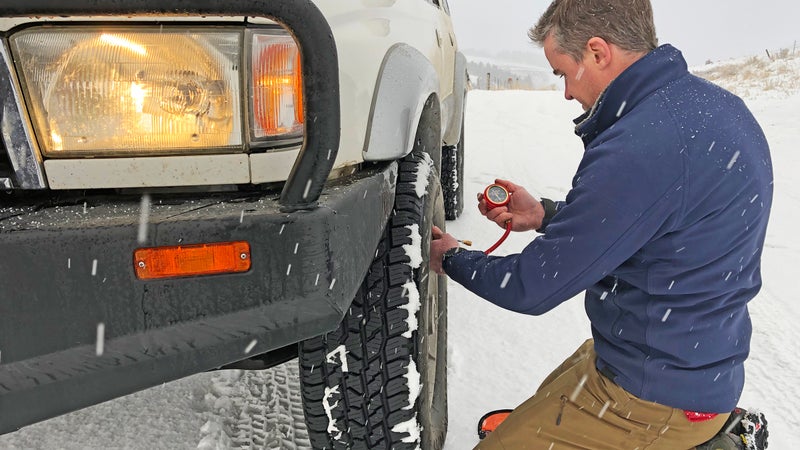
Suspension: $500
The larger a tire is, the easier it will roll over off-road obstacles. But the larger a tire is, the heavier it will be. Weight is a particular issue here because tires rotate, and the heavier they are, the harder it will be to accelerate and slow the rotation of those tires. The previous owner, a smart guy, figured that mimicking the stock tire size of a last-generation Jeep Wrangler Rubicon wouldn’t just result in a good compromise between capability and weight but would also give him (and now me) the widest-possible choice for good rubber.��
I’m writing about tire size in a section about suspension because it’s important to keep a vehicle as low as possible while still clearing your tires throughout their entire path of movement. Going up in tire size necessitated a lift, but with these 32-inch tires, that lift can be kept to a modest 1.25 inches.��
Lifting a vehicle can get complicated fast and isn’t possible on everything. If you go the AWD crossover route, do yourself a favor and stick to a tire size that will work at the stock suspension height. You can figure that out . Lifting those vehicles ruins their good on-road dynamics and doesn’t net you enough added off-road ability to make that worthwhile.��
For the 4Runner, we were able to lift it with the aid of suspension alone, which also gave us the chance to fit higher-quality Fox 2.0 shocks in the front and rear. This helps smooth out the ride and gives us equipment that won’t wear out or overheat through challenging terrain.��
For off-roading in winter, the extra clearance achieved by the combination of taller tires and suspension helps keep the body clear of deep snow. It also adds a little reassurance that I’m not going to whack something important on an unseen obstacle hiding beneath the white stuff. By keeping that lift as low as possible, I’m also keeping the now-taller vehicle as stable as possible.��
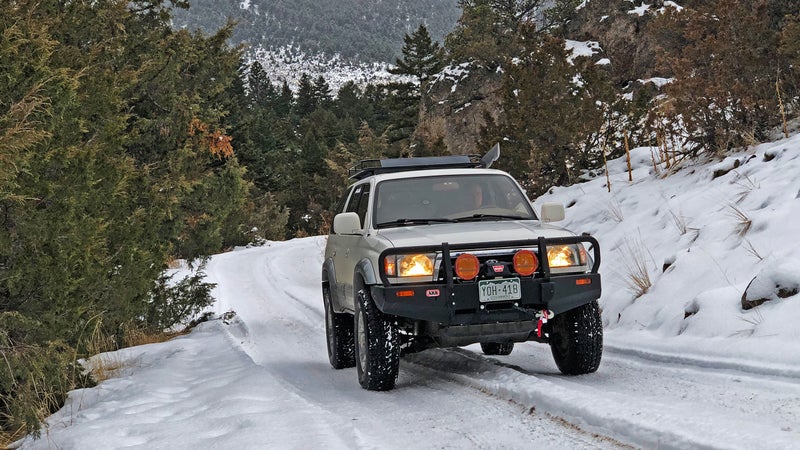
Bumper: $900
The number-one cause of is deer strikes. Swerving or slamming on the brakes to avoid an animal that jumps into the road, especially when that road is slippery, can be incredibly dangerous. The quarter-inch-thick steel of this ARB bumper is capable of shrugging off animal strikes without damage.��
Bumpers also shrug off light knocks off-road (or in parking lots) and give you the ability to mount other accessories like driving lights and winches. They also provide easily accessible recovery points that are strong enough to withstand winching and snatching.��
Versus a bull bar or similar “protection” parts that retain the stock plastic bumper, ARB’s equipment is also certified to the most stringent governmental standards in the world (Australia’s) to ensure that your vehicle’s crumple zone and airbags still function as intended. And they do this while offering more protection for your car than the alternative.��
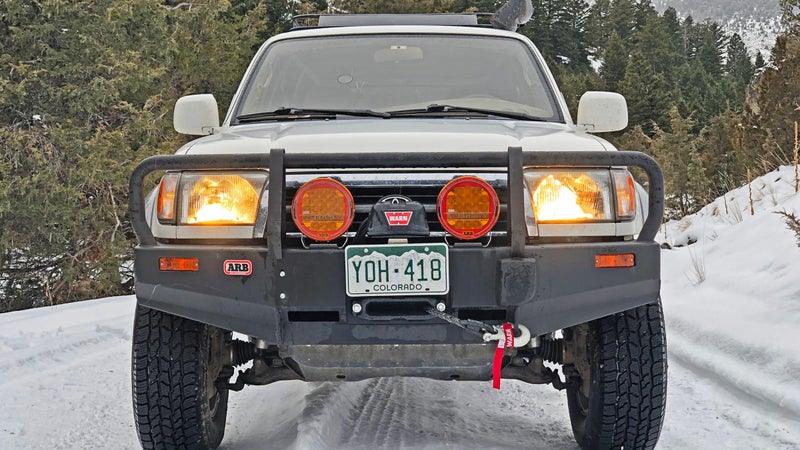
Lights: $1,000
Not only are winter nights longer, but winter driving conditions dictate that you must take action to avoid animals, obstacles, or ice as early as possible if you’re to successfully avoid them. Auxiliary driving lights are able to reach much farther, with much more brightness, than your stock headlamps (especially on an older truck), empowering you with the ability to take evasive action earlier.��
There’s a ton of crazy-cheap aftermarket lighting options, but none of them produces anything like their claimed levels of illumination, and those will likely die an early death due to the failure of their cheap components. In contrast, ARB’s Intensity lights live up to their performance claims and will likely outlast the life of this truck—and the next one I fit them to.��
I opted for the smaller AR21 lights. As the name suggests, they’re each fitted with 21 LEDs, contained in a seven-inch circle. Each puts out 6,950 lumens, blanketing everything in front of the car with light as far as you can see. I also fitted a set of amber covers. These reduce light output by 15 percent, but by increasing the wavelength of that light, they actually increase visibility in snow or rain. That longer wavelength of amber light doesn’t refract or reflect off precipitation as much as white light, helping you see through it. And amber light increases contrast, which can be especially useful if you’re trying to parse nuanced surface changes when everything around you is white.��
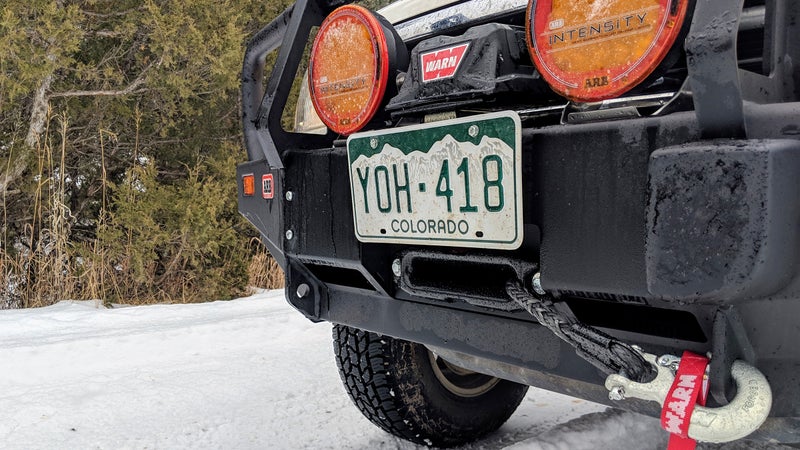
Winch: $700
Using a winch can be very dangerous. The tension created by thousands of pounds of pulling power just doesn’t end well if anything in the system fails, or if you rig a pull improperly. That leads to two conclusions: you should buy the highest-quality winch your budget allows, and you should probably get some training in how to use one.��
Rather than opt for a cheaper brand, I went with the cheapest suitable option from the most reputable winch maker: Warn. Its VR-8S winch has an 8,000-pound pulling capacity and 90-foot synthetic line. To determine how much winch you need, look up your gross vehicle weight rating (the weight of your truck plus a maximum load) and multiply that by 1.5. The 4Runner’s GVWR is 5,250 pounds, so that formula means I need a winch that can pull at least 7,875 pounds.��
Going for a synthetic line over steel adds $200 to the price, but it also adds safety and reduces weight. Not only are synthetic lines stronger than steel, but they do not store energy under tension, meaning they’ll fall to the ground—rather than whip through the air with deadly force—if they break. They’re also 80 percent lighter, significantly reducing the amount of weight carried in front of my truck. Also, synthetic lines don’t corrode like steel does, and since we’re talking winter, that’s another important consideration.��
Maintenance: $750
Cold temperatures and lots of moisture are hell on vehicles. Add in road salt, and all components on your car will wear faster and face challenges in winter weather. So bringing them up to date on maintenance is essential before it gets cold.��
The 4Runner came to me with fresh fluids and a new timing belt. But it needed new brakes and a new rear axle seal. I paid a real mechanic $350 to do the brakes, since they’re so vital to safety, but I saved money by replacing the axle seal in my driveway, with the aid of the former owner. That probably cost about $200, since I needed to buy a seal puller and have the bearing pressed home at a machine shop, as well as replace the rear diff’s gear oil.��
To get it ready for winter, I also fitted new headlight bulbs, tested the battery, and changed the oil. A thorough inspection in the engine bay, and underneath, gives me peace of mind that nothing else is on the verge of failing.��
Emergency Gear: $250
I strapped a shovel to the roof rack and loaded up a Rubbermaid Action Packer with a , a , and . That basic equipment will easily deal with the most common problems any vehicle faces, giving me the ability to excavate the truck from a snow drift, repair a flat tire, or bum a tow, all without waiting for AAA to show up. I also throw in the glove box any time I’m headed out overnight, just to make extra sure that the truck will start the next morning. I consider this equipment the minimum necessary in any of my vehicles.��
